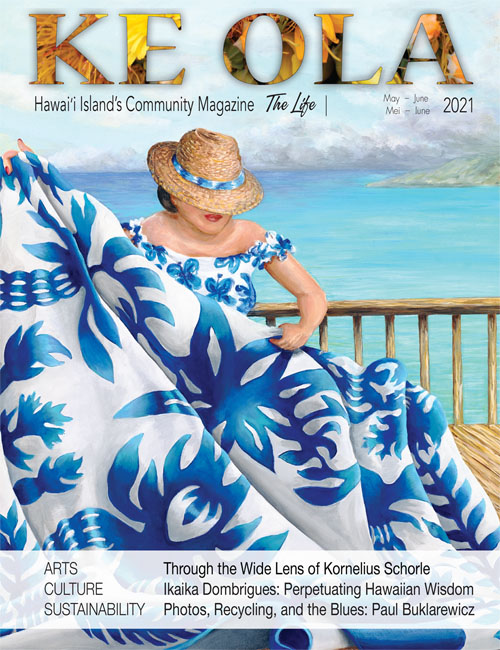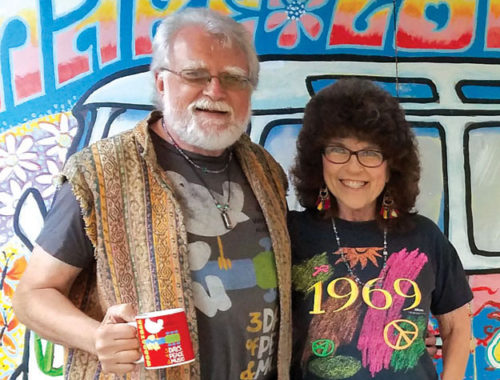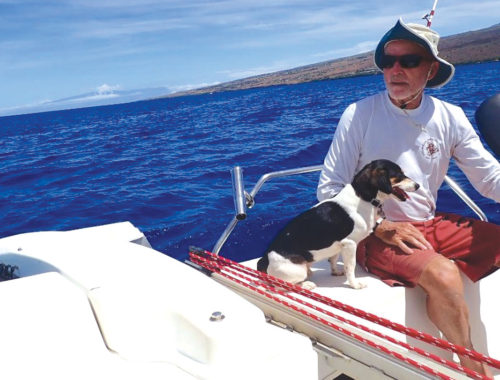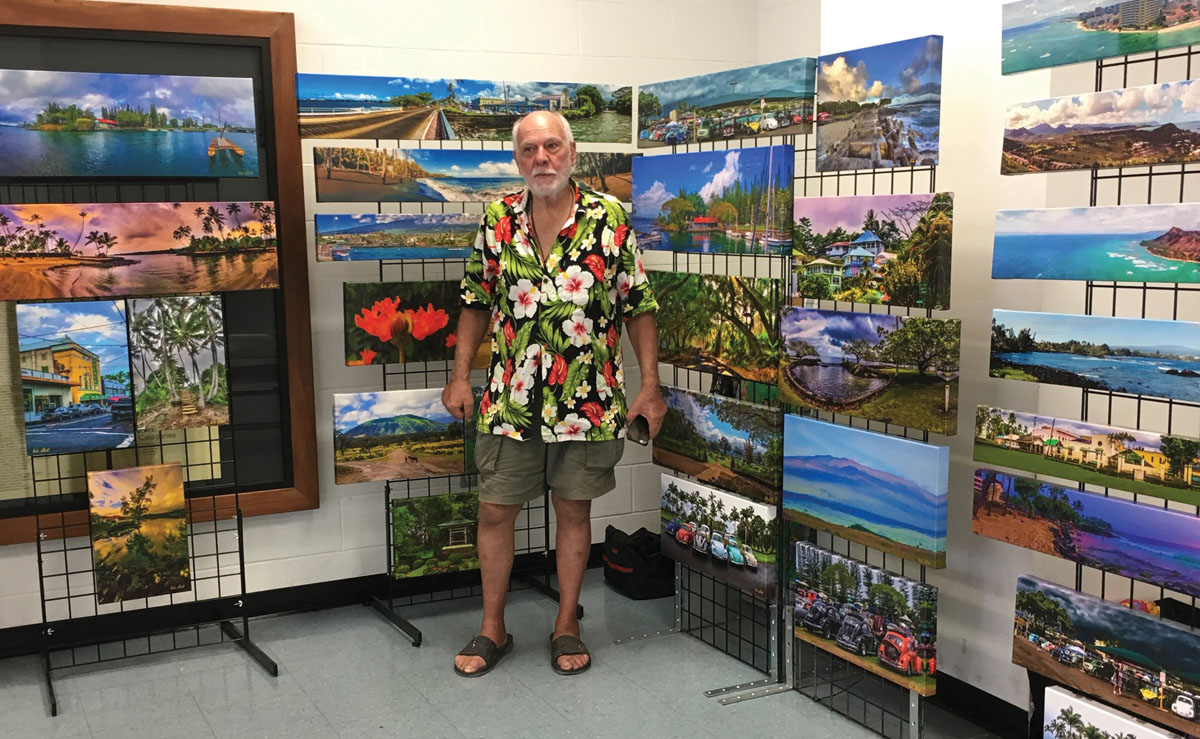
Through the Wide Lens of Kornelius Schorle

By Stefan Verbano
Kornelius Schorle deals in postcards from the past. Peering through his camera lens, working with the care and patience of a master craftsman, he has preserved forever—in saturated colors—beloved Hawai‘i Island places that will never be seen again.
His photography brings permanence to this ever-changing island, which once boasted many well-loved coastal landscapes that are now faded, fragmented memories: the curvature of the bay, the deep hue of the ocean, the dancing palm trees lining the shore, the shape of waves as they break, the sunlight glinting off wet black sand. These mental fragments of the past are pieced together again instantly upon seeing Kornelius’s work, eliciting excited reactions from residents and visitors alike who’ve developed intimate, sensory connections to these places and who, upon first spotting his vibrant canvases on display, exclaim, “That’s it! That’s what I remember.”
Over the course of half a century and two destructive lava flows, Kornelius and his tireless efforts to document the island’s scenic beauty, especially in lava-prone Puna district, has produced what could be considered the definitive photographs of bygone places like Kapoho Tide Pools, Pohoiki Bay, and Ahalanui Beach Park—affectionately known as Warm Ponds. These swimming spots were casualties of the 2018 Lower Puna Eruption, but live on in the veteran photographer’s portfolio in all of their royal-blue-sky, aquamarine-water and verdant-green glory. Also preserved through his works is the Old Kaimū Black Sand Beach in Kalapana. This was once a crescent-shaped, palm-lined sandy shoreline prized by old time Hawaiians as a safe place to launch and haul out their canoes. The village of Kaimū and its world-famous beach were completely covered in 1990 during the climax of a years-long lava flow from Kīlauea Volcano’s Pu‘u ‘Ō‘ō vent.
Kornelius specializes in panoramas. From very early on in his photographic career, he recognized the advantage of shooting photos with elongated fields of view. Decades ago, while on assignment capturing a panorama of roughly 500 students, faculty, and staff at Cypress College in California, he told a reporter for the Los Angeles Times: “There’s no way you can come back from a photo adventure with a conventional shot—a ‘squatty picture’— and say ‘this is what I saw.’” There’s a strong preference among admirers of photography, he says, to see what he calls the “extended version,” or what the viewer sees with both eyes. The term “panorama” derives from Greek words meaning “all-sight,” and refers to images showing a field of view equal to or greater than that of the human eye.

This means that Kornelius’s panoramas of now-devastated places on Hawai‘i Island are the closest a canvas can come to mimicking what they truly looked like in real life; not as the familiar rectangles of conventional photos which are just small pieces of the vista, but as broad, expansive swaths of land that induce in the viewer an overwhelming sense of place. Prospective buyers of his work, upon seeing such brilliant detail and sweeping scope, are sometimes incredulous.
“They ask: ‘Is this even real? Is this on this island?’” the master panoramist says. “My work gets to be like that—some of it, anyway. It can be so ethereal.”
Kornelius describes his photos in terms like “atmospherics” and “essentialism.” In the world of panoramic photography, this latter term refers to building a scene around its essential points in order to bring more meaning to the finished product. In the case of his well-renowned shot of Pohoiki Bay from the breakwater at pre-lava Isaac Hale Beach Park, the “essentials” of the photo, he says, are the red house and the boat ramp, as opposed to the rock wall, breakwater pilings, parking lot, swimmers, shimmering shoreline, or puffy clouds.
“Without the house and the ramp it could be anywhere,” he says. “It would still be pretty, but much less meaningful.”
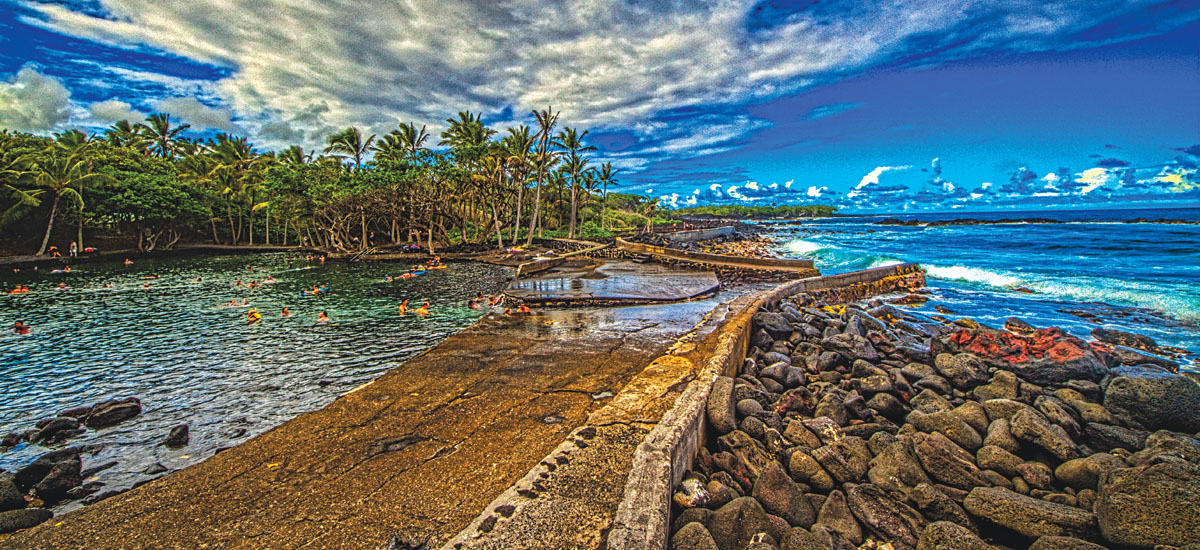
During Puna’s most recent eruption, Kornelius was in Leilani Estates—the flow’s epicenter—standing in a forested section between two properties capturing the row of emerging volcanic fissures as they spat lava gobs high into the air against a dark, smoky sky silhouetted by ‘ōhi‘a trees. When asked how he ended up there at dusk on that fateful day, the photographer credits Pele for drawing him to her creations.
“I have a special relationship with Madam Pele,” he says. “I was summoned. No phone call, no nothing…it’s very strange how that worked.”
His shutter clicked away as the flow engulfed a 12,000-gallon water catchment tank and it exploded into a massive ball of white steam. Then, as night fell, the eruption had progressed to a point where the police officers and national guardsmen had to get everyone out. The sound of the fissures, which Kornelius likens to “four or five jet engines going off at the same time,” had crescendoed into such a terrible roar that the authorities had to fire their guns into the air to get his attention. With a heavy heart, he took his last shots in the failing light and retreated.
“Of course I wanted to stay, I’m a photographer,” he says. “Even if the lava came over me, I didn’t care. I wanted to document it…I didn’t want to just talk about it. I would have spent the entire night there if they let me.”

His Early Years
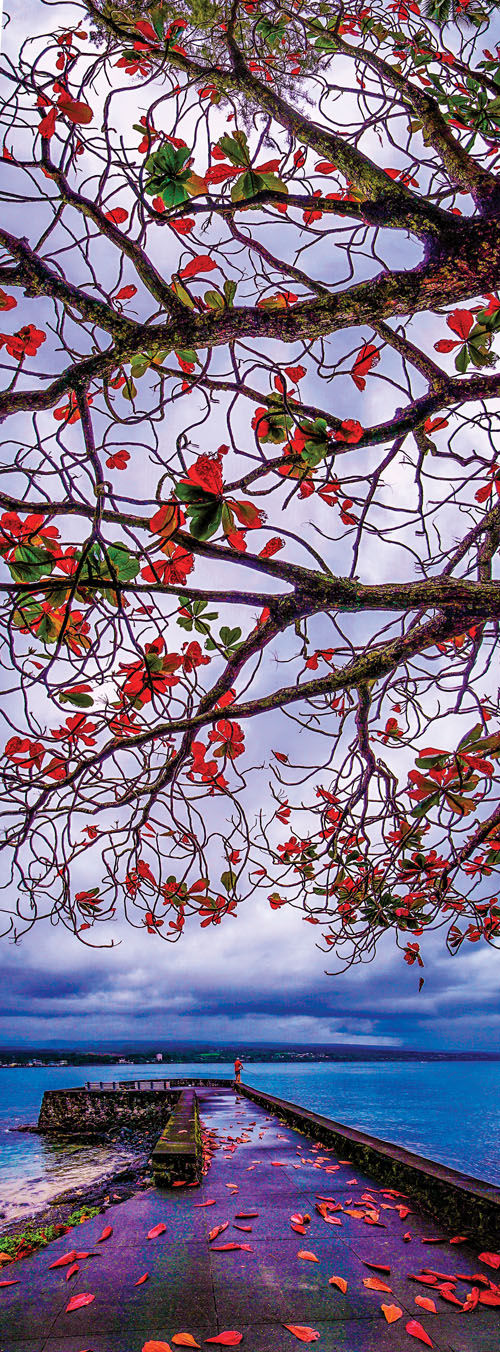
Kornelius grew up in East Germany under the iron hand of communism. Before the souring of US–Soviet relations, he was free to cross the border into West Germany at will, and did so nearly every day to see movies or buy food unavailable in the east, like bananas. Going through the checkpoint again on his way home, the border guards would sometimes stop him and eat his bananas. He was 18 years old and already into black and white photography when he finally decided to flee to the west in 1960. Throwing his bicycle over the fence, and with only the clothes on his back, his passport, and a 35-millimeter camera, he made his way toward an American radar station very close to the border.
An aunt in West Germany let him stay with her, sparing him from life in a refugee camp. A few weeks later he was on a transatlantic ship headed for New York City with a new passport and political asylum, and on arrival went into business with his two brothers in Queens. He worked days and attended school every night, earning a high school diploma and certificate in English as a second language. In 1968 he left New York for California to work at the service center of a German car dealership.
All the while Kornelius was honing his photography skills, selling his pieces at craft shows and small galleries. In Irvine, California, he opened the Long and Skinny Picture Company offering film stock, photo processing services, gear rentals, lighting equipment—even smoke machines. During his time off, he went on numerous photo adventures to far-flung places like Norway, Italy, South America, China, Denmark, South Korea, Spain, Portugal, and France.
In the pre-digital photography era, he recalls embarking on journeys to capture panoramas of the many lighthouses spread throughout the Greek Islands—journeys that involved the backbreaking schlep of 150 pounds of analog camera gear from location to location. At one point, he had to bribe a Greek pilot with a print of his Athens panorama for permission to safely stow his bulky gear in the plane’s cabin. For this reason alone, Kornelius says, he doesn’t miss analog.
“You’ll never find me harking back to the good old days because there were no good old days…there was schlepping,” he says. “You will never find me in a position to be snobbish because I embrace technology. Without technology, we wouldn’t have pictures…I would never poopoo it. Any kind of art form, if you can pull it off, is worth it.”
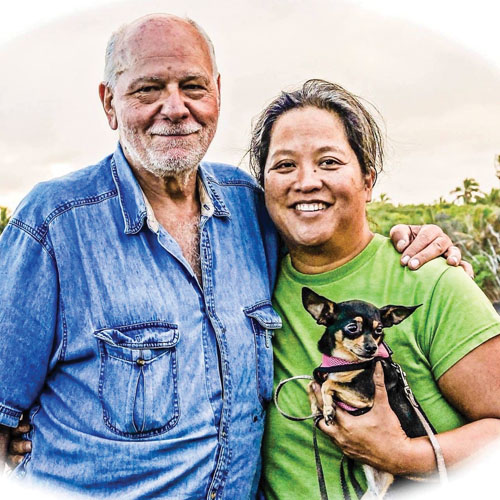
At his home/studio in Hawaiian Paradise Park, Kornelius has an impressive collection of bulky pre-digital film cameras which, while top-of-the-line in their heyday, are now essentially worthless because they can’t be retrofitted for digital. He pulls out a modern, compact thousand-dollar Sony digital camera that fits in the palm of his hand and by itself replaces most of those 150 pounds of gear he once toted all over Greece.
“Look at this—it goes in your pocket,” he says with a triumphant smile, slipping the Sony into the breast pocket of his Hawaiian shirt.
By the time Kornelius is finished with the story of his long life—punctuated with his ambling away several times to fetch this canvas or that to better tell the tale—he is surrounded by his life’s work. His art is spread out on tables, leaning against chairs, stacked against walls. All around him are the vibrant colors, textures, and patterns of a tropical wonderland which cast its unbreakable spell on a young, aspiring photographer 50 years ago, when he visited Hawai‘i for the first time and realized he’d found a place where he could “make beautiful art all day, every day.” Though he may not have realized it in that moment, over the course of the coming years, the permanence of his craft would become a welcome saving grace on an ever-changing island where many well-loved places live on today only in photographs. ❖
All photos courtesy of Kornelius Schorle except where noted
For more information:
Hawaii Photo Art: facebook.com/groups/1007663555964242
